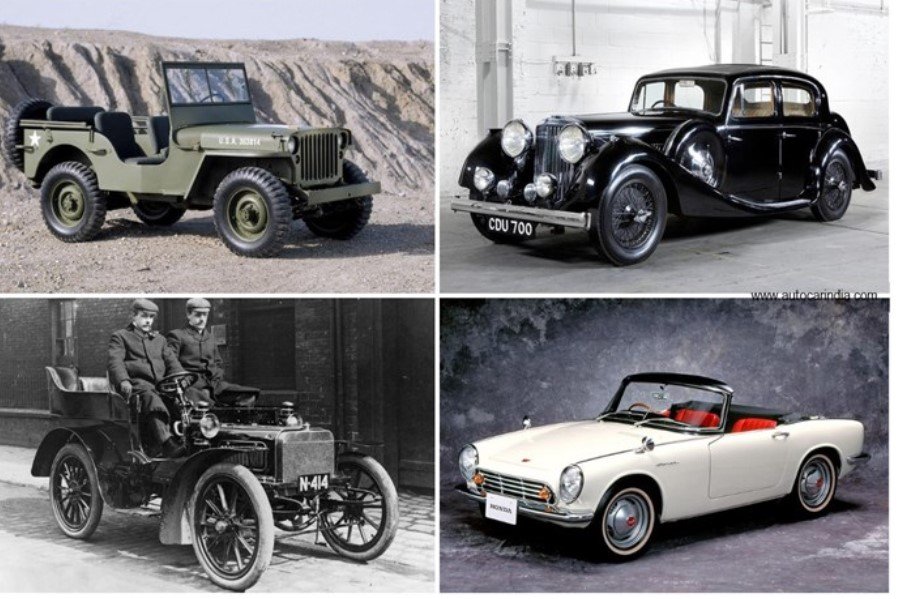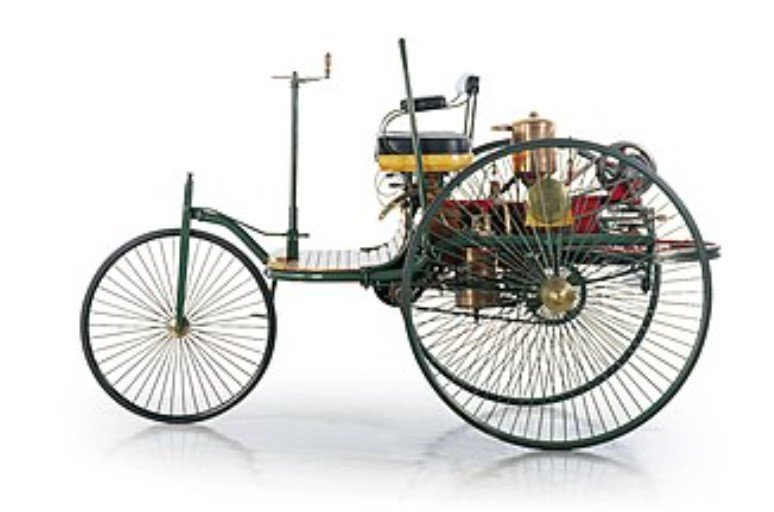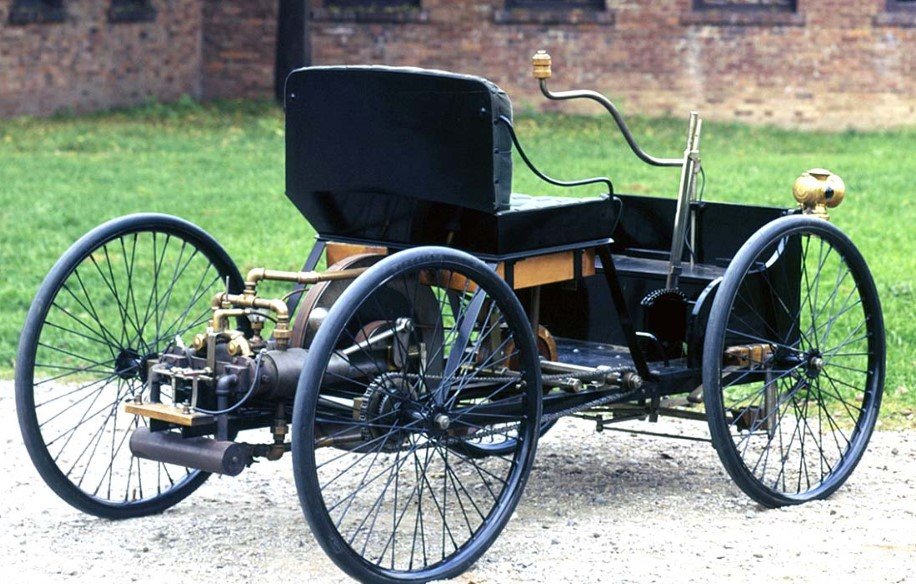Many enthusiasts like yourself are intrigued by the rich history and groundbreaking innovations of the oldest cars in the world. Delving into the evolution of these iconic vehicles provides a unique perspective on the advancements that have shaped the automotive industry. Join us on a journey through time as we explore the top 9 oldest cars that have left an indelible mark on the history of transportation.
Key Takeaways:
- Oldest Car: The Benz Patent-Motorwagen, invented by Karl Benz in 1886, is hailed as the oldest car in the world and paved the way for modern automobiles.
- Ford Model T: The Ford Model T, introduced in 1908, revolutionized the automobile industry by making cars affordable and accessible to the general public through innovative mass production techniques.
- Rolls-Royce Model: The Rolls-Royce Model set new standards for luxury and craftsmanship, showcasing elegant design, powerful engineering feats, and innovative technological features that defined its enduring legacy.
- Stevens-Duryea Model L: The Stevens-Duryea Model L stands as one of America’s longest-running automobile brands, renowned for its timeless appeal, exceptional craftsmanship, and unique features that set it apart from its competitors.
- Legacy of Vintage Cars: Vintage cars reflect a time of innovation, craftsmanship, and adventure, symbolizing the rich history and evolution of the automotive industry, with lessons from early steam-powered vehicles shaping future automobile designs.

1. The Fardier à vapeur
Built in 1770
Built in 1770, the Fardier à vapeur is widely recognized as the world’s first self-propelled vehicle. Created by Nicolas-Joseph Cugnot, this groundbreaking invention paved the way for future automotive advancements. Despite its humble appearance, this vehicle was a testament to early engineering ingenuity and innovation.

Steam-powered tricycle
Assuming the form of a steam-powered tricycle, the Fardier à vapeur was primarily utilized for transporting artillery for the French army. Its compact design and utilization of steam power set it apart from traditional horse-drawn carriages of the time. The introduction of steam as a means of propulsion represented a significant leap forward in transportation technology.
It only took a few moments for the Fardier à vapeur to demonstrate its capabilities and change the course of automotive history. The incorporation of steam power not only marked a departure from conventional modes of transportation but also underscored the potential for innovation in the automotive industry. As you explore into the history of this remarkable vehicle, you’ll come to appreciate the pioneering spirit that drove early inventors to push boundaries and redefine the way we travel.
2. The Oglethorpe Runabout
Manufactured in 1884
If you probe into the history of the Oglethorpe Runabout, you’ll find a fascinating tale of innovation and engineering prowess. Manufactured in 1884, this early American automobile represents a significant milestone in automotive history. With its compact design and steam-powered engine, the Oglethorpe Runabout quickly became a popular mode of transportation during its time.
Vintage Classic
For vintage car enthusiasts, the Oglethorpe Runabout is a true classic that embodies the essence of a bygone era. Its timeless design and historical significance make it a sought-after gem in the world of antique automobiles. The Oglethorpe Runabout’s presence evokes a sense of nostalgia and admiration for the craftsmanship and ingenuity of early car manufacturers.
With its unique place in automotive history, the Oglethorpe Runabout stands as a testament to the evolution of cars and the pioneering spirit of the individuals who shaped the industry. Owning a piece of this vintage classic allows you to connect with the legacy of early automobiles and appreciate the advancements that have led to the vehicles we enjoy today.
3. The Benz Patent-Motorwagen
Invented by Karl Benz
Once again, you find yourself immersed in the fascinating world of automotive history, this time exploring the Benz Patent-Motorwagen. You’ll be amazed by the ingenuity of its inventor, Karl Benz, who paved the way for modern automobiles with this groundbreaking invention. Your journey into the past will reveal how this remarkable vehicle transformed transportation and set new standards for innovation.

First true automobile
While delving deeper into the history of the Benz Patent-Motorwagen, you’ll discover that it holds the prestigious title of being the first true automobile powered by an internal combustion engine. This pioneering vehicle marked a significant milestone in automotive development, revolutionizing the way people traveled and inspiring future inventions. Its impact on society was profound, changing the way individuals connected and experienced the world around them.
You can explore the remarkable advancements in engineering and design that were introduced with the Benz Patent-Motorwagen, setting it apart as a trailblazer in the world of automobiles. The innovative features and technological capabilities of this historic vehicle continue to captivate enthusiasts and historians alike, showcasing the enduring legacy of Karl Benz’s visionary creation.
4. The De Dion Bouton et Trépardoux Dos-à-Dos Steam Runabout
Unique seating arrangement
Noteworthy for its unique seating arrangement, the De Dion Bouton et Trépardoux Dos-à-Dos Steam Runabout featured passengers facing each other “back-to-back.” This innovative design not only allowed for a more intimate interaction among passengers but also contributed to the vehicle’s overall balance and stability. The Dos-à-Dos configuration was a departure from traditional car seating layouts, showcasing the inventiveness of the manufacturers.
Produced in 1884
While the De Dion Bouton et Trépardoux Dos-à-Dos Steam Runabout was produced in 1884, its impact on early automotive engineering was significant. This pioneering vehicle boasted a range of approximately 20 miles on one tank of water, showcasing the advancements made in steam-powered transportation. The year 1884 marked a crucial period in automotive development, with innovations like the Dos-à-Dos seating arrangement setting the stage for future advancements in vehicle design and performance.
5. The Duryea Motor Wagon
Built by Charles and Frank Duryea
Now, let’s examine into the remarkable Duryea Motor Wagon, a pioneering vehicle constructed by the visionary brothers Charles and Frank Duryea. This historic creation marked a significant milestone in automotive history, making a lasting impact on the development of cars as we know them today.
First gasoline-powered US car
Assuming the title of the first gasoline-powered automobile manufactured in the United States, the Duryea Motor Wagon exemplified innovation and forward thinking. Its introduction heralded a new era of transportation, showcasing the potential of gasoline as a viable power source for vehicles.
Motor enthusiasts were captivated by the Duryea Motor Wagon’s groundbreaking design and functionality, which set a precedent for future automotive engineering. Its impact on the American automobile industry cannot be understated, as it paved the way for the country’s significant contributions to the global automotive landscape.
6. The Ford Quadricycle
Henry Ford’s first creation
Now, let’s take a closer look at the Ford Quadricycle, which holds historical significance as Henry Ford’s first automobile creation. With its introduction in 1896, the Quadricycle marked the beginning of Ford’s illustrious journey in revolutionizing the automotive industry. As the inaugural model from one of the most iconic car manufacturers in history, the Ford Quadricycle paved the way for a new era of transportation innovation.

Simple design
Clearly, the Ford Quadricycle stood out for its simplistic yet effective design. The vehicle featured a lightweight frame and a basic configuration, making it easy to operate and maneuver. Despite its minimalistic approach, the Quadricycle embodied Ford’s vision of creating a practical and accessible mode of transportation that would eventually transform the way people traveled.
Fords’ dedication to simplicity in the design of the Quadricycle allowed for a more streamlined production process, enabling greater efficiency in manufacturing and assembly. This commitment to simplicity laid the groundwork for Ford’s future models, setting a standard of accessibility and functionality that resonates even in modern automobiles.
7. The Rolls-Royce Silver Ghost
Many classic car enthusiasts regard the Rolls-Royce Silver Ghost as an iconic symbol of automotive excellence. Launched in 1906, this prestigious vehicle set a new standard for luxury and craftsmanship in the industry. The RollsRoyce Silver Ghost was known for its elegant design, impeccable performance, and unparalleled attention to detail, making it a coveted choice among the elite of its time.
Launched in 1906
RollsRoyce introduced the Silver Ghost in 1906, establishing its reputation as an exquisite luxury car that catered to the discerning tastes of the aristocracy. The vehicle’s whisper-quiet engine, refined interiors, and superior engineering set it apart from its competitors, solidifying its position as a symbol of opulence and sophistication on the roads.
Exquisite Luxury Car
Little did RollsRoyce know that the Silver Ghost would become a timeless masterpiece cherished for generations to come. Its exquisite craftsmanship and attention to detail set a new benchmark for luxury vehicles, embodying the epitome of automotive elegance and sophistication. The Silver Ghost was more than just a mode of transportation; it was a statement of prestige and refinement that captivated the hearts of those who were fortunate enough to experience its unparalleled luxury firsthand.
It continues to be revered as one of the most luxurious and elegant vehicles ever created, a true testament to the timeless allure of the Rolls-Royce brand.
8. The Cadillac Type 53
Pioneer from America
From America comes the iconic Cadillac Type 53, a pioneer in the world of automobiles. This remarkable vehicle holds a special place in automotive history, showcasing the innovative spirit of American engineering. The Cadillac Type 53 boasted advanced features for its time and represented a significant leap forward in the evolution of cars.
Vintage classic
Pioneering the way for future automotive advancements, the Cadillac Type 53 stands as a vintage classic that continues to capture the imagination of car enthusiasts worldwide. With its timeless design and impressive performance, this iconic vehicle symbolizes an era of elegance and sophistication in automobile engineering.
Step into the world of vintage cars with the Cadillac Type 53, an embodiment of American innovation and craftsmanship. This historic vehicle exudes a sense of nostalgia and grandeur, making it a cherished piece of automotive history that remains relevant even today.
9. The Stevens-Duryea Model L
Longest-running American brand
Despite its age, the Stevens-Duryea Model L stands tall as one of America’s longest-running automobile brands. This iconic vehicle has withstood the test of time, captivating collectors with its exceptional craftsmanship and engineering prowess.
Rich history
You’ll find that the Stevens-Duryea Model L has a rich history that spans several years. This remarkable vehicle continues to capture the attention and admiration of collectors even today.
For instance, the Stevens-Duryea Model L showcases exceptional features that set it apart from its competitors. From its elegant design with graceful curves to its powerful engine and luxurious interiors, every aspect of this vintage masterpiece exudes opulence and sophistication.
Conclusion
Ultimately, exploring the top 9 oldest cars in the world has provided a fascinating journey through automotive history. Each of these iconic vehicles, from La Marquise to the Ford Model T, has left an indelible mark on the evolution of cars and transportation. By delving into their unique features, design innovations, and historical significance, you’ve gained a deeper understanding of how these pioneering automobiles have shaped the way we travel today. The stories behind these vintage classics serve as a testament to human ingenuity, perseverance, and the relentless pursuit of technological advancement in the automotive industry.
As you reflect on the legacy of these vintage cars, remember that they are more than just relics of the past; they are symbols of progress and innovation. The innovations introduced by early inventors and manufacturers continue to inspire modern automotive engineering and design. By acknowledging the historical importance of these oldest cars, you honor the rich heritage of the automotive industry and recognize the visionary pioneers who paved the way for the cars we see on the roads today. Embrace the timeless elegance and groundbreaking achievements of these historic vehicles, and let their stories ignite your curiosity and appreciation for the captivating world of automotive history.
FAQ
Q: What is the oldest car in the world?
A: The oldest car in the world is the Benz Patent-Motorwagen, invented by Karl Benz in 1886. It is considered the first practical automobile powered by an internal combustion engine.
Q: What makes the Benz Patent-Motorwagen significant in automotive history?
A: The Benz Patent-Motorwagen marks a major milestone in transportation history as the first vehicle to receive a patent and paved the way for modern automobiles with its innovative internal combustion engine.
Q: What is unique about the Ford Model T in automotive history?
A: The Ford Model T, introduced in 1908, revolutionized the automobile industry by being the first car to be mass-produced on an assembly line, making cars more affordable and accessible to the general public.
Q: How did the Stevens-Duryea Model L stand out in the history of automobiles?
A: The Stevens-Duryea Model L is one of America’s longest-running automobile brands known for its exceptional craftsmanship, engineering prowess, and enduring popularity among collectors.
Q: What role did steam-powered vehicles like the Cugnot Steamer and Grenville Steam Carriage play in early transportation?
A: The Cugnot Steamer and Grenville Steam Carriage were pioneers in steam-powered transportation, showcasing innovative steam engine technology and laying the groundwork for future automobile advancements.







